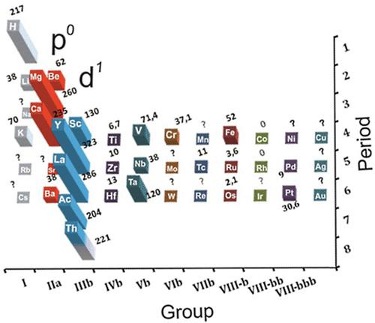 |
| April 17, 2018 | Volume 14 Issue 15 |
Designfax weekly eMagazine
Archives
Partners
Manufacturing Center
Product Spotlight
Modern Applications News
Metalworking Ideas For
Today's Job Shops
Tooling and Production
Strategies for large
metalworking plants
Scientists discover a link between superconductivity and the periodic table
Scientists from Moscow Institute of Physics and Technology and Skoltech have demonstrated the high-temperature superconductivity of actinium hydrides and discovered a general principle for calculating the superconductivity of hydrides based on the periodic table alone. The results of their study were published in March in The Journal of Physical Chemistry Letters.
High-temperature superconductivity is a phenomenon of zero electrical resistance in certain materials at temperatures above -196 C (the temperature of liquid nitrogen) that physicists, chemists, and materials scientists worldwide have been intensely researching for decades, as room-temperature superconductors open up vast prospects for the power industry, transport, and other technology-driven sectors.

Scientists in Moscow propose that p0 and d1 metals with low-lying empty orbitals tend to form phonon-mediated high-temperature superconducting (HTSC) metal polyhydrides. The correlation to the pattern in the periodic table may help identify promising superconducting materials more quickly. [Credit: Dmitrii V. Semenok et al./The Journal of Physical Chemistry Letters]
Currently, the record holder in high-temperature superconductivity is hydrogen sulfide (H3S), which functions as a superconductor at 1.5 million atmospheres and temperatures down to -70 C. Such pressure levels can only be attained in a lab environment, not in real life, and the temperature is way below room temperature, so the search continues for new superconductors. Perhaps an even higher-temperature superconductivity can be attained in metal-hydrogen compounds. Yet the link between chemical composition and superconductivity was unclear, leaving scientists to puzzle it all out by trial and error.
A group of chemists led by Artem R. Oganov, professor at Moscow Institute of Physics and Technology and Skoltech, recently discovered that certain elements capable of forming superconducting compounds are arranged in a specific pattern in the periodic table.
They theorized that high-temperature superconductivity develops in substances containing metal atoms that come close to populating a new electronic subshell. Metal atoms inside the crystal are thought to become highly sensitive to the positions of the neighboring atoms, which results in strong electron-phonon interaction -- the underlying effect of conventional superconductivity.
Based on this assumption and looking at the periodic table, the scientists supposed that high-temperature superconductivity could occur in actinium hydrides -- substances that fit the desired subshell pattern. Their supposition was verified and confirmed: superconductivity was predicted for AcH16 at temperatures of -69 to -22 C at 1.5 million atmospheres.
"The very idea of a connection between superconductivity and the periodic table was first put forward by Dmitry Semenok, a student at my lab," said Oganov. The principle he discovered is very simple, and it is really amazing that no one had hit upon it before."
Source: Moscow Institute of Physics and Technology
Published April 2018
Rate this article
View our terms of use and privacy policy
